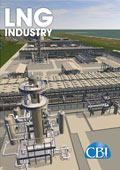Editorial comment
In the January/February issue of LNG Industry, I commented on how rising LNG prices had contributed to Japan’s record trade deficit of US$ 78 billion last year. Since then, the country’s Prime Minister Shinzo Abe has met with President Barack Obama in Washington to ask the US to permit exports of its vast shale gas reserves to Japan. In a move that may help facilitate such a deal, Japan has now signaled its intention to join talks on the Trans-Pacific Partnership (TPP), a free trade agreement (FTA) currently being negotiated by 11 countries in Asia and the Americas.
Register for free »
Get started now for absolutely FREE, no credit card required.
This should come as no surprise, as Japan attempts to gain automatic access to cheaper LNG. The US shale gas boom has driven prices well below those seen in much of Asia and Europe. US exporters currently price their gas off Henry Hub, which sells for around US$ 3 – 4/million Btu, less than a quarter of the price that LNG is sold for in Asia. This price gap is leading to increasing pressure from Asia for changes to traditional oil-indexed pricing and contract mechanisms. Such change may be on the way. According to a recent global survey of the LNG industry conducted by John M. Campbell | Petroskills (the results of which are presented in this issue, starting on p. 26), we can expect to see more short-term contracts based on negotiated gas prices going forward. The survey also suggests that an Asian hub pricing may eventually prevail. The obstacles and opportunities of developing such a trading hub have recently been outlined in a report from the International Energy Agency.* In it, the IEA suggests that “the future role of gas in Asia will depend on whether natural gas pricing is tied more closely with supply and demand fundamentals in the region.” The report emphasises the importance of creating an Asian gas trading hub, with Singapore put forward as the most likely candidate for such a role. The industry appears to be on the brink of a price reform. In the meantime, Japanese gas importers are understandably reluctant to commit to oil-indexed LNG as they wait to see how much Henry Hub indexed gas is allowed to flow out of the US. It will be interesting to monitor what influence Japan’s decision to join the TPP negotiations will have on the prospects of such exports. The fact that Japan has decided to join the talks, in itself, does not automatically open the country up for US exporters. The accord would still need to include natural gas and requires congressional approval. There is also a strong campaign underway by many opposed to unrestricted LNG exports from the US, who raise both environmental and domestic pricing concerns. However, bringing Japan into a FTA agreement would certainly appear to be welcome news for those companies trying to export LNG from the US. The question is what impact those exports, and the potential new LNG pricing structure, will have on the rest of the industry. There are concerns that Japan’s desire for lower prices is holding up other projects, where developers require the revenue security provided by long-term, oil-linked contracts. As Ernst & Young points out in its latest ‘Global LNG Report’: “As substantial volumes of lower-cost LNG move into Asian markets, projects at the high end of the supply curve – namely, many of the Australian projects – will become increasingly vulnerable.” The debate is set to continue at this year’s LNG 17 Conference in Houston, Texas. LNG Industry will be exhibiting at the show, so please drop by stand 1065 to give us your thoughts! *A summary of this report, and many more, can be found in the new ‘Special Reports’ section of our website.


